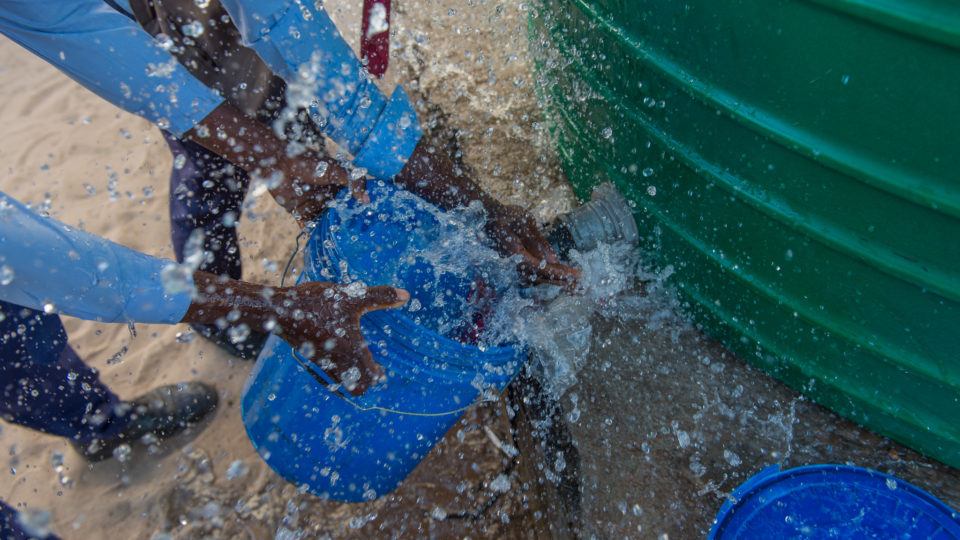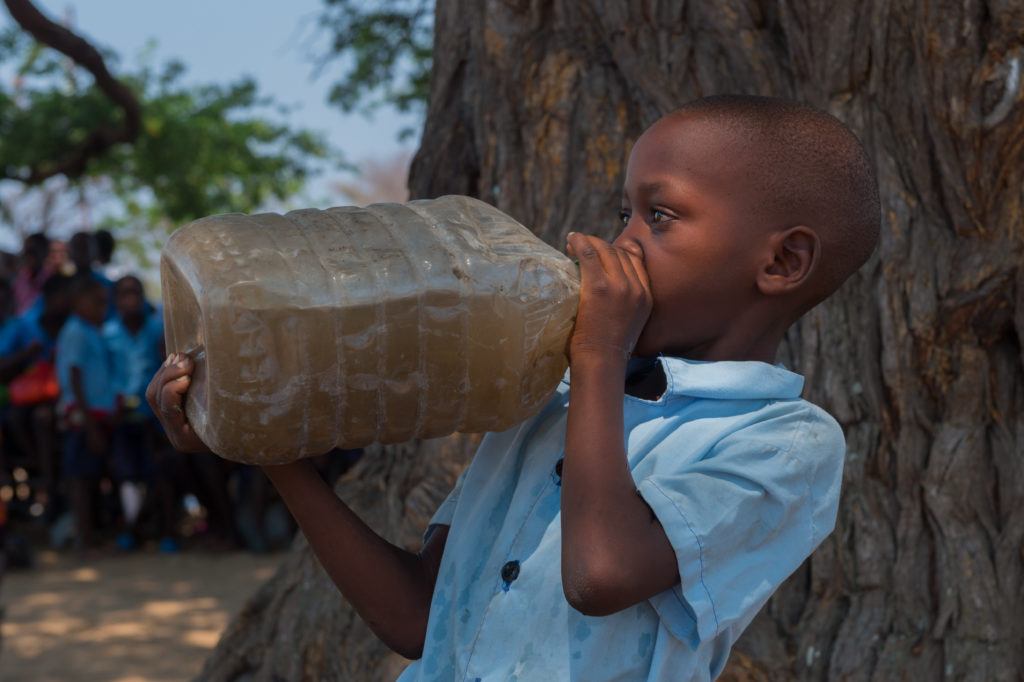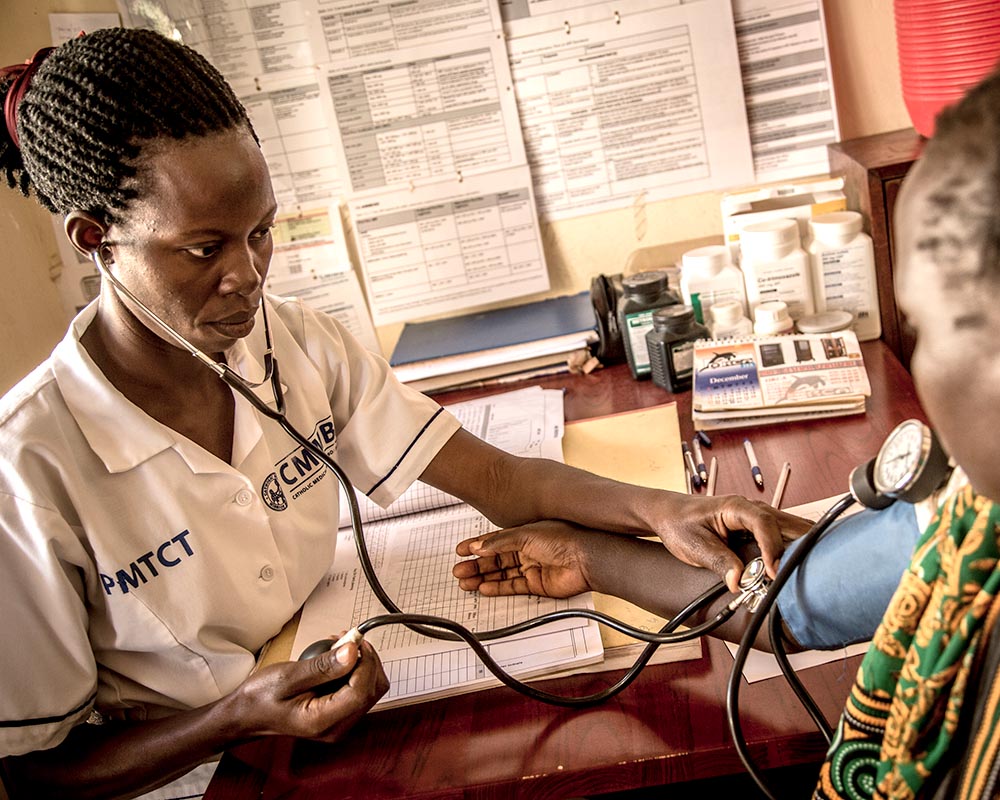World Water Day 2020: “Take This With a Full Glass of Water”

Today we are celebrating World Water Day with a story from our volunteer, Whitney Hurt-Wonderlich! Whitney is a pharmacist who is volunteering alongside her husband, Dr. Tom Wonderlich in Mutomo, Kenya. In this piece, Whitney discusses how rain, HIV, and medicine are connected.
As a pharmacist, I have handed out thousands of prescriptions while saying “Take this with a full glass of water.” Simple, right?
In a place like Mutomo, Kenya, it’s not that simple. Accessing clean, safe water is a challenge people face here every day.
The Journey for Water
The other day, one of my colleagues in Mutomo and I were sitting together during a break one afternoon getting to know each other. I was drinking some water as it was a very hot day. She was telling me stories of where to get water during the dry season.
Not this year, but the last four years there were months without any rainfall. People usually get water from a small man-made reservoir near town. When that runs out, people have to travel further to a reservoir that is difficult to climb up. If they have access, people may bring a donkey to help carry the water back down. When that point dries up, people have to set out and search for water even farther from home.
One time, my colleague said she left her house at 3:00 am to look for water for her family to avoid the extreme heat of the day. She did not return until 3:00 am the next day.
She explained how hard it is to see your children hungry, but seeing them thirsty is worse.
“They can’t go as long without water.”
This year she thanks God for the rain. But the rainfall is not without its own challenges.
The Challenges of Rain
Rain is a great blessing, but comes with some downfalls. It makes travel hard, causes flash flooding, increases malaria cases and sweeps away crops many here depend on, that are typically grown in a dry environment.
One day when heading out to a community HIV clinic, it took us an additional hour to wait for the road to be cleared of buses and vehicles stuck in the mud so that our land-cruiser vehicle could push through it.
Some of that time was spent wondering if our vehicle of workers, computers and medication for clinic would need to return and send someone on a motorcycle with medications. If we didn’t have that vehicle, we would be even later to the clinic.
In America, being late is usually just a nuisance, you reschedule for the following day or week. Patients here have to sometimes cross rivers to come into clinic, so you can imagine if we don’t arrive on time or at all that day, it can mean certain patient’s go without their care and medications.
When Rain Slows the Flow of Health Services
For example, one might not guess that rain could have any impact on how people access their HIV medicine. But that impact can be enormous.
If rain causes flash flooding, road closures and blockages, hampering people’s ability to reach the facility where they pick up their ARTs (antiretroviral therapy), they cannot take them. With HIV, it is very important to not miss doses to decrease the chance of drug resistance.
Looking even deeper, this can affect the rates of HIV in children. PMTCT (Prevention of Mother to Child Transmission), keeps pregnant women and their babies on ART. When they are able to adhere to the treatment, the baby’s chance of contracting HIV is 5% or less, vs 20-45% without preventative therapy according to the Kenya Ministry of Health guidelines 2018.
As a pharmacist, I am now seeing the intersection of water and medicine. Here, the two are inextricably linked. So my usual directions to “take this with a full glass of water” hold a greater weight than I ever could have expected.



